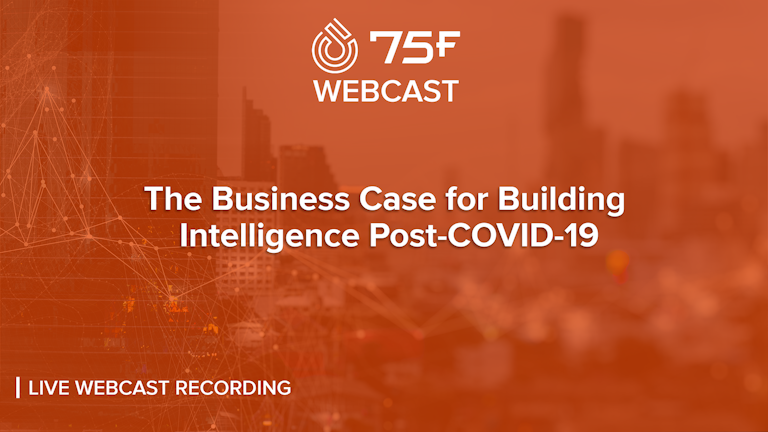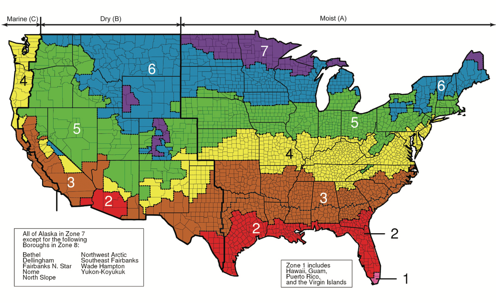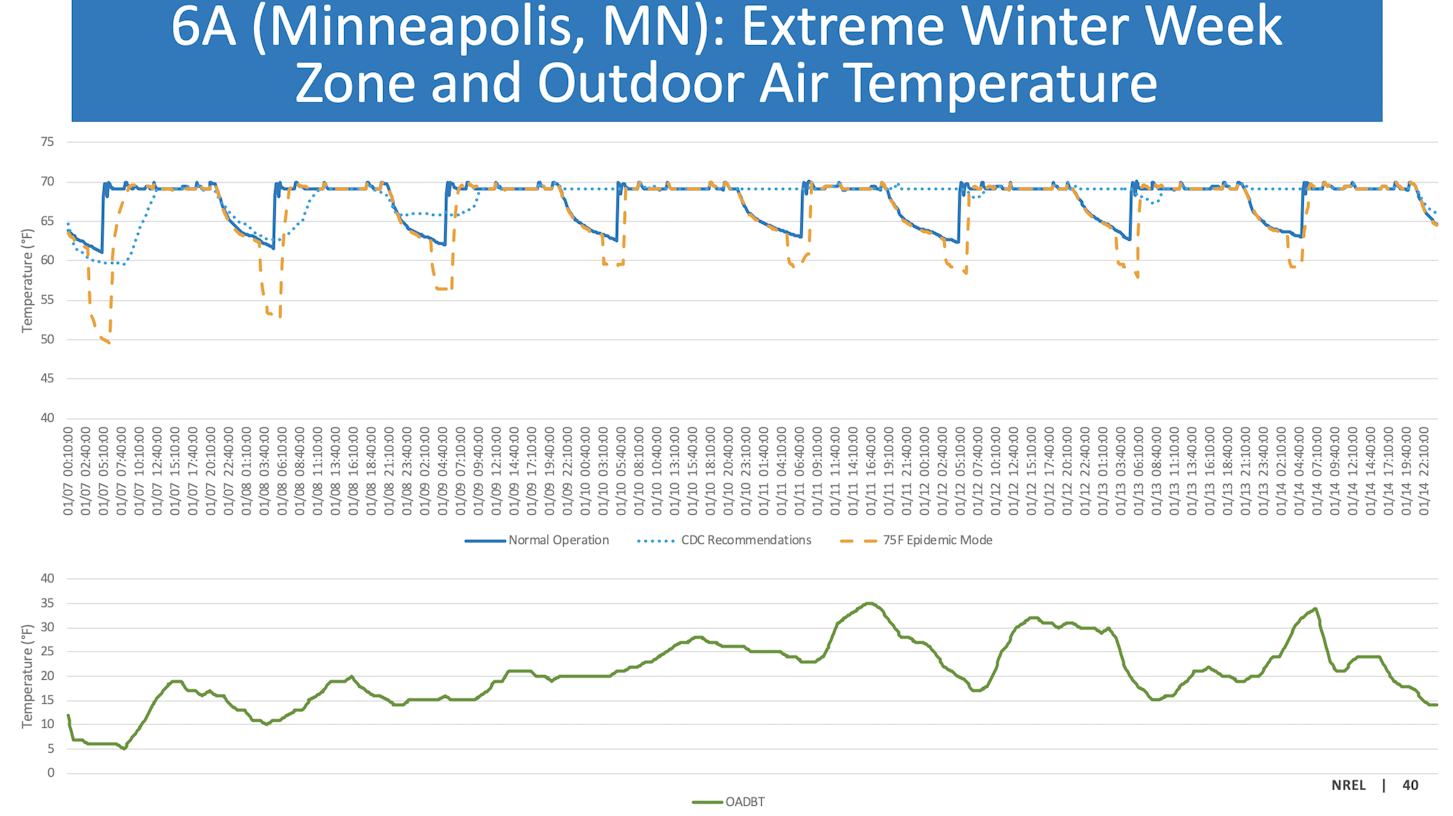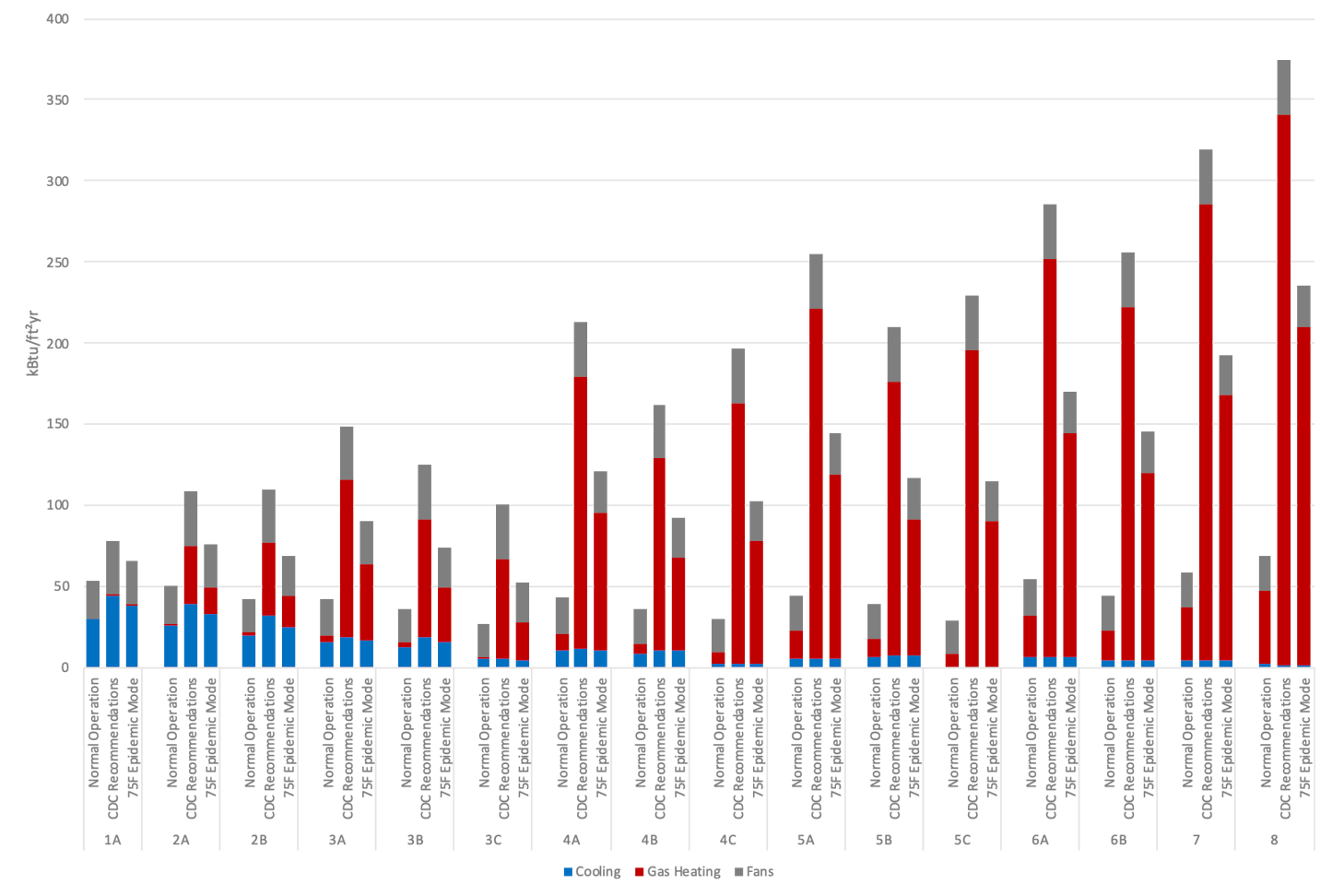
Healthier Buildings Series: The Business Case for Building Intelligence Post-COVID-19
As facility managers take steps to reopen their buildings amidst an ongoing pandemic, most already know about expert-recommended HVAC control sequences to reduce the spread of COVID-19 indoors.
By now, they’re also likely aware of the energy implications tied to these strategies. Disabling demand-control ventilation, opening outside air dampers to the maximum extent possible and purging the air inside a building twice every day are going to come with a cost. Various estimates place this cost at somewhere between two and five times that of normal HVAC operation.
Data from a new National Renewable Energy Laboratory (NREL) study demonstrates that following these guidelines doesn’t have to be so costly with the right building intelligence solution. Building researchers Marcus Bianchi and Eric Bonnema shared preliminary data from this study with viewers on the latest session of 75F’s Healthier Buildings webcast series.
Savings Potential With 75F Epidemic Mode™
NREL’s study sought to find out how much energy would be required to follow expert recommendations to utilize 100 percent OA — or as much OA as system equipment can handle — all the time. The lab compared these numbers to “normal” HVAC operation, and then to the 75F Epidemic Mode™, an HVAC control sequence designed expressly for life during a pandemic.
NREL researchers used U.S. Department of Energy prototype models for a standalone retail building and a medium office. Model operations were as follows:
“Normal Operation” — no increased airflow rates.
CDC guidelines — 100 percent OA (modeled at 70 percent due to equipment capacity) 24/7, no thermostat setup or setback.
75F® Epidemic Mode™ — 100 percent OA three hours before occupancy, 50 percent OA during occupied hours, staggered occupancy in medium office.
Researchers studied these scenarios across the U.S.’ 16 climate zones, including detailed weekly results using Houston, Texas and Minneapolis, Minnesota as representative cities from hot and cold climates.



How 75F Epidemic Mode™ Works
75F Epidemic Mode™ is a new sequence of operations based on the latest guidance from scientists, government organizations, and global industry leaders.
As recommendations from these authorities evolve over time, Epidemic Mode will update over the cloud to implement the most current strategies to minimize viral transmission, all while maximizing energy efficiency and indoor air quality (IAQ).
Because the 75F system implements these guidelines to the maximum extent possible for each individual piece of HVAC equipment based on its unique capacity and weather conditions, there’s no risk of equipment damage from running a system outside parameters. Once the pandemic is controlled and guidelines ease, 75F’s technology allows building managers to remotely turn off Epidemic Mode.
Q&A
At every Healthier Buildings session, attendees are asking valuable questions. We've compiled a few of them with our answers below.
"What aboutPM 2.5 and PM 10 particles? Is there a recommendation for these indicators regarding covid-19?" — Miguel
According to the journal Science, particles 3-5 micrometers or microns in diameter will remain airborne for at least 12.5 hours in a still room—possibly much longer. 50-100 micron particles are expelled up to 8 feet with a sneeze or cough, but these smaller particles are released as well, and can travel much farther. Importantly, they are also released by asymptomatic individuals just by talking or breathing.
By comparison a human hair is 100 micrometers, so these are infectious particles too small to be caught by a mask or trapped in any HVAC filter. The consistent recommendation is to increase ventilation and dilute the concentration and expel these particles from buildings before and after occupancy, and to use outside air rather than recirculating air for these reasons.
"Howeffective is thermal screening? Asymptomatic people typically do not show a raised temp." — Marshall
This is correct. Health screening at doors or entrances requires both equipment and full-time staff with enough training to stop guests or employees. It won’t work for asymptomatic individuals, and depending on clothing worn or the temperature outside, it is possible to get false readings.
Health screening does play an important role in making guests or occupants feel safe while returning to work, particularly as enhanced ventilation from outside air is something that cannot be seen. It can also re-enforce mask use or other policies to keep occupants safe.
"Have you seenincreased service calls from clients for equipment since it's operating more frequently or possibly outside design parameters?" — Kevon
The energy savings that you see here from Epidemic Mode correlate to reduced strain on equipment, and should not result in increased operating expenses or maintenance. In most climate zones, the additional wear and maintenance on your HVAC equipment will be only slightly above your building before this pandemic.
75F has a full-service solution where our technicians monitor your buildings 24/7 and can notify you of future problems before they occur so service calls can be scheduled well in advance.










